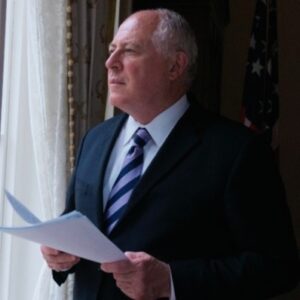“Sir James Dickson: A Pioneering Statesman’s Legacy and Lasting Impact on Australia”

Introduction:
Meet Sir James Dickson: Visionary Leader and Catalyst for Change
Sir James Dickson stands as a beacon of visionary leadership, etching an unforgettable imprint on the realms of achievement and innovation. Renowned as a luminary in his field, his journey is defined by an unwavering commitment to excellence, a deep-seated sense of purpose, and a dedicated pursuit of a future marked by progress and positive transformation. As a leader, Sir James Dickson consistently exhibits an unparalleled ability to navigate intricate challenges with wisdom and foresight. Fueled by a strategic vision and a fervor for innovation, he has risen to the forefront of his domain, earning widespread admiration and respect from peers and colleagues alike.
Early Life And Education Background:
Sir James Robert Dickson (1832-1901), a prominent businessman and statesman, entered the world on 30 November 1832 in Plymouth, Devon, England, as the sole heir to James Dickson and Mary Maria, née Palmer. His educational foundation was laid at Glasgow High School, followed by a stint as a junior clerk in the City of Glasgow Bank. In pursuit of new horizons, he ventured to Victoria in 1854, initially working at the Bank of Australasia and later in his merchant cousin’s enterprise, Rae, Dickson & Co. In 1862, Sir James relocated to Queensland, where he joined the ranks of Arthur Martin’s estate agency before establishing his own enterprise in the early 1870s. Specializing as an auctioneer and estate agent, he amassed considerable wealth, culminating in the construction of Toorak House on a splendid site near the Brisbane River. The family firm eloquently described the locale as having ‘views marvelous in their magnificence’ and presenting ‘a varied panorama of ineffable loveliness and grandeur.’
Read Also: https://theboiworld.com/richard-marles-leadership-accountability-australia-politics/
Amid these captivating surroundings, Sir James Dickson remained steadfast in his commitment to business. He assumed the role of chairman for the Brisbane Permanent Building and Banking Co. from 1876, became the foundation chairman of the Queensland Trustees in 1883, and took the helm as chairman of the Royal Bank of Queensland during the tumultuous year of 1893. His unwavering dedication to both business and civic responsibilities showcased his resilience and leadership prowess, leaving an enduring legacy in the annals of Queensland’s economic and financial history.
Personal Life:
Sir James Dickson’s matrimonial journey unfolded in two chapters, each contributing to the rich tapestry of his personal life. His initial union took place on 8 November 1855, when he married Annie Ely (1838-1880) in Collingwood, Victoria. This marriage brought forth a family that endured, producing six sons and seven daughters. Tragically, Annie Ely passed away in 1880. In the second chapter of his marital story, Sir James embarked on a new chapter by marrying Mary Mack inlay (1841-1902) on 5 January 1882 in Carcoar, New South Wales. Mary Mack inlay would later become the first headmistress of the Brisbane Girls’ Grammar School, leaving her mark on the educational landscape.
The legacy of Sir James Dickson extended to his descendants, with six sons and seven daughters from his first marriage. Notably, his second son, Frederick (1859-1928), went on to become the Crown prosecutor in Brisbane. Frederick’s contributions were significant, highlighted by his role as an acting judge of the Arbitration Court, where he delivered the Dickson award for the sugar industry in 1916.
The visual echoes of Sir James Dickson’s life can be found in portraits adorning the walls of Parliament House in Canberra, as well as in the boardroom of the Brisbane Permanent Building & Banking Co. These portraits serve as timeless reminders of a man whose personal and familial bonds were as integral to his narrative as his public contributions.
Political Career:
In 1873, Sir James Dickson secured victory in the Enoggera seat in the Legislative Assembly, marking the beginning of his political journey. Swiftly ascending to ministerial positions, he served as the secretary for public works and mines from May to June 1876, and subsequently held the position of colonial treasurer from June 1876 to January 1879 and then again from December 1883 to August 1887. Notably, Sir James exhibited his financial acumen by effectively managing the £10 million loan of 1884.
However, a divergence of views with more radical colleagues, particularly regarding their proposals for a land tax, led to his resignation in August 1887. His departure, accompanied by the assertion that he had yet to understand why being a freeholder should be considered a ‘crime,’ resonated with his constituents. Despite this, a by-election in September following his resignation saw overwhelming support from the electorate.
Although Sir James Dickson’s political seat seemed secure, challenges arose in the 1888 general election due to constituency redistributions and the entry of a rival Liberal candidate. Defeated in the Toombul portion of his old electorate, he faced a setback but remained undeterred.
Re-entry in politics:
In the subsequent years, Sir James retired from his auctioneering business in 1889, embarking on extensive travels throughout Europe. Upon his return, he reentered politics, winning the Bulimba seat in a by-election in April 1892. This victory was achieved by aligning with Sir Samuel Griffith in advocating for the resumption of importing South Sea islanders for labor in Queensland.
Ministerial office eluded him until February 1897 when he assumed the role of secretary for railways in the Nelson government. His political ascent was rapid thereafter, holding positions such as postmaster-general in March 1897, home secretary in March 1898 (retaining this role in the Byrnes ministry), and, albeit temporarily, premier in October 1898 following the sudden death of Byrnes and (Sir) Robert Philp’s initial reluctance to accept the office.
Amid various contentions about Sir James Dickson’s motivations, particularly regarding Federation, his ministry achieved a significant milestone with the successful conduct of the Queensland referendum on the Commonwealth bill on 2 September 1899. Despite challenges, including a divided Assembly and hostility from certain quarters, Dickson’s leadership garnered acknowledgment, with Alfred Deakin praising his ‘invaluable assistance’ in the Federation cause.
First Defense Minister of Australia:
The concluding chapter of Sir James Dickson’s illustrious career unfolded with a tragic, dramatic, and regrettably brief turn of events. Honored with the title of K.C.M.G. in January 1901, he assumed the pivotal role of Minister of Defence in the inaugural Federal administration. However, fate dealt a cruel hand during the Commonwealth’s inaugural ceremonies in Sydney, as Sir James fell seriously ill. His health deteriorated rapidly, and after just one week in office, he succumbed to his ailments on 10 January. It was revealed that he had battled diabetes for approximately eighteen years. This unforeseen and somber turn of events cast a shadow over the distinguished businessman-politician’s final moments in public service. Queensland, recognizing the unintended but impactful role he had played as one of its prominent Federal spokesmen, honored Sir James Dickson with a state funeral. His final resting place became the Nunda cemetery, marking the conclusion of a remarkable career and the passing of a figure whose contributions left an indelible mark on both state and national levels.
Honor:
In November 1891, Sir James Dickson achieved the esteemed status of Fellow of the Royal Geographical Society, a testament to his contributions in the field. An even more significant recognition came just nine days before his passing when he was appointed a Knight Commander of the Order of St Michael and St George in the New Year’s Honors List on 1 January 1901. This prestigious honor acknowledged his pivotal role in the Federation of Australian Colonies and the establishment of the Commonwealth of Australia.
Sir James Dickson’s enduring legacy is further immortalized in the nomenclature of the federal electoral division of Dickson in Queensland and the Canberra suburb of Dickson, both named in his honor. These tributes stand as lasting reminders of his profound impact on the nation’s history and his unwavering commitment to the cause of the Australian Federation.
Death:
Sir James Dickson passed away on 10 January 1901. The cause of his death was attributed to complications related to diabetes, a condition he had been battling for approximately eighteen years.
Written By: Shalik Khan







